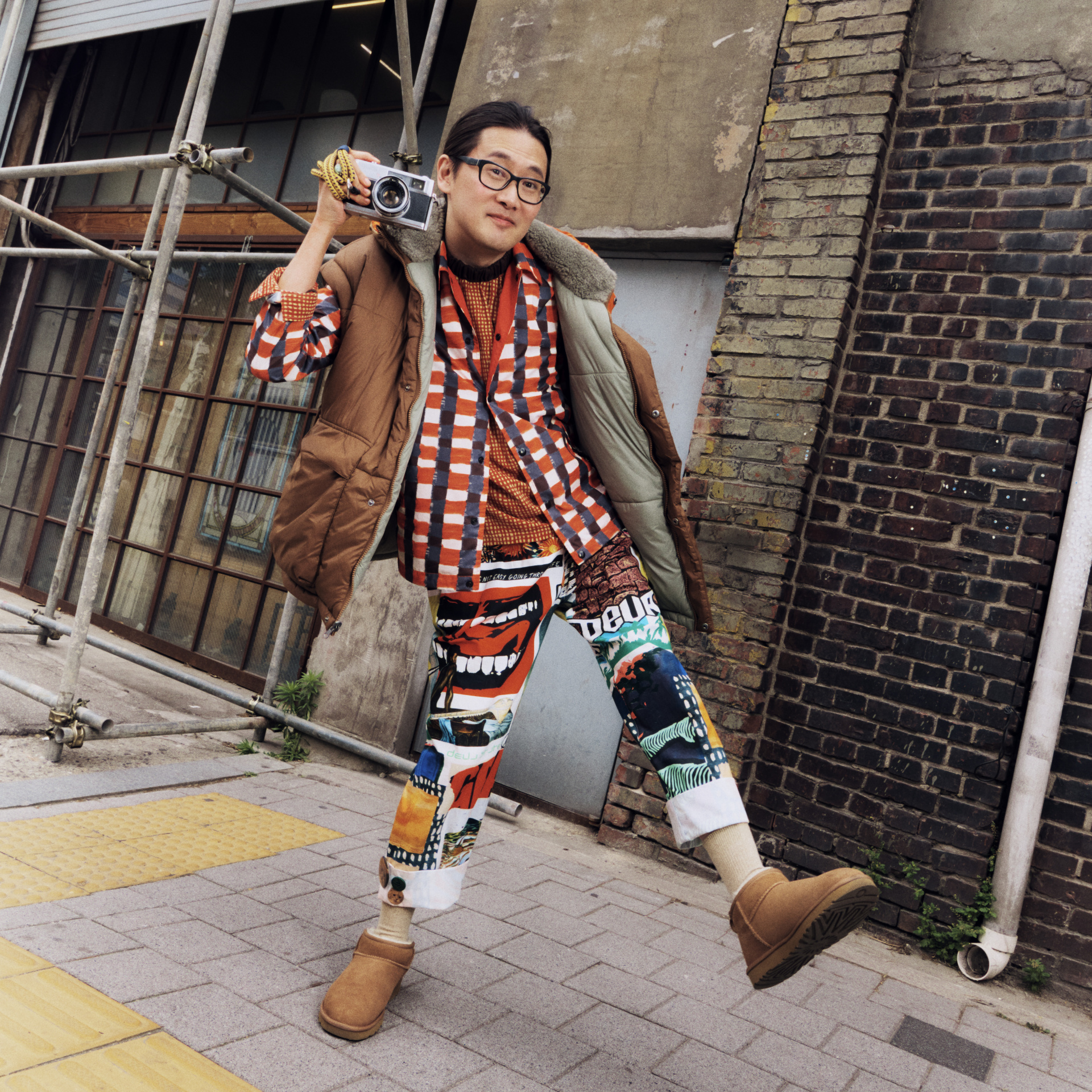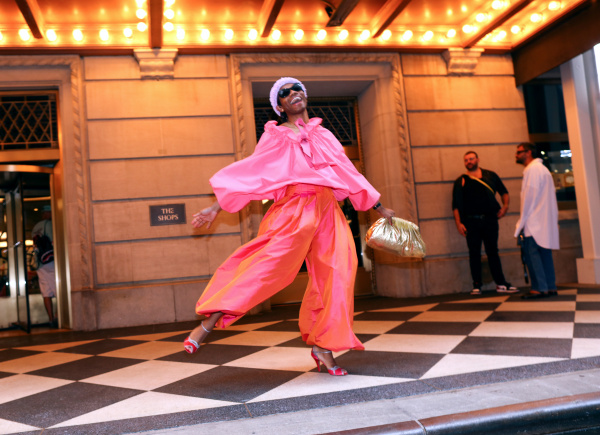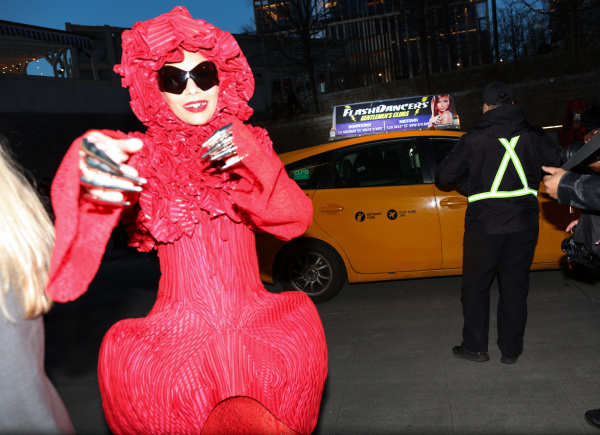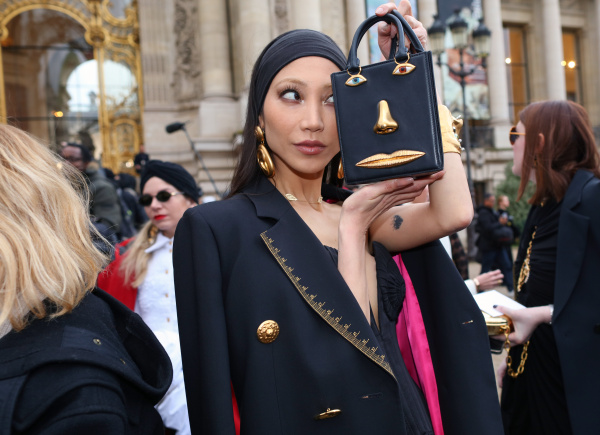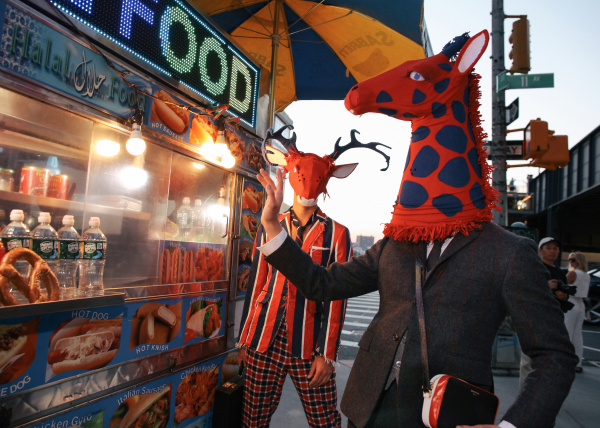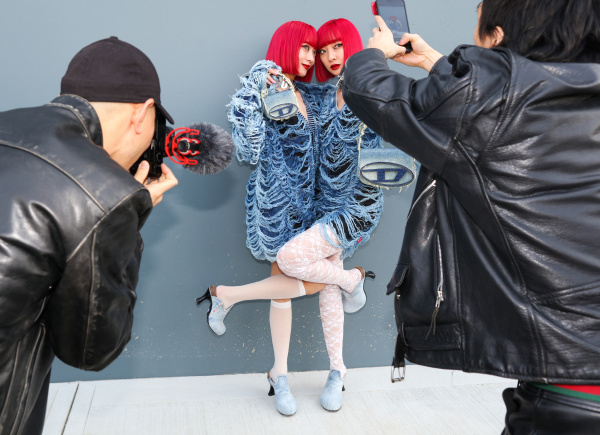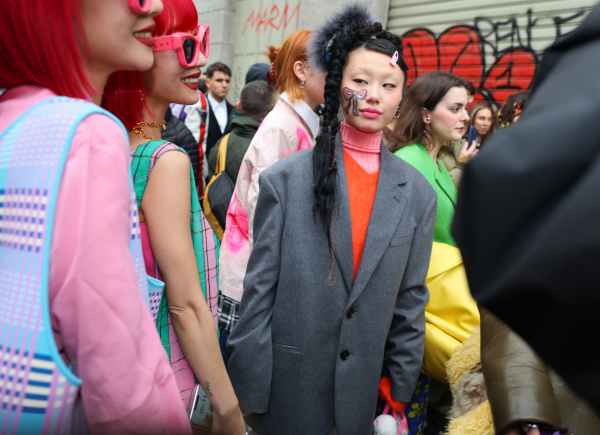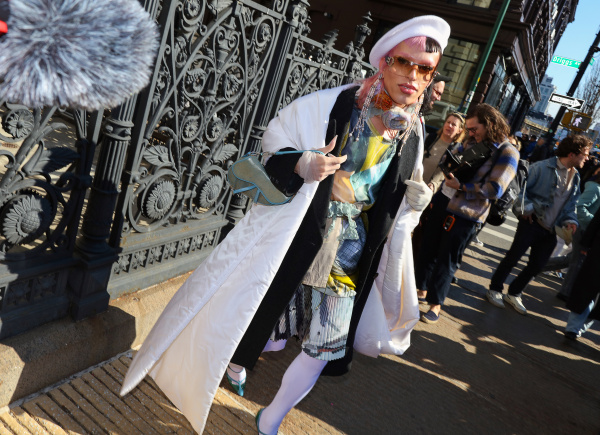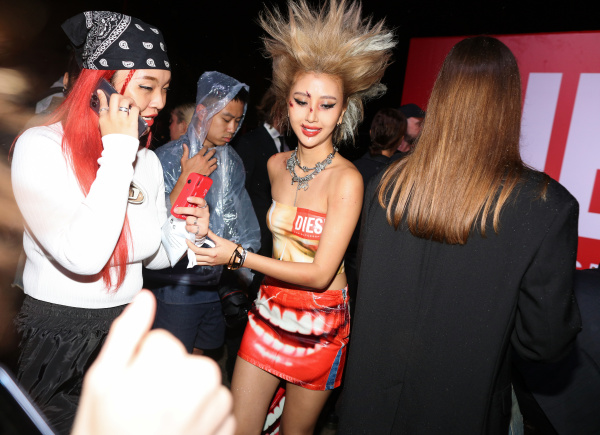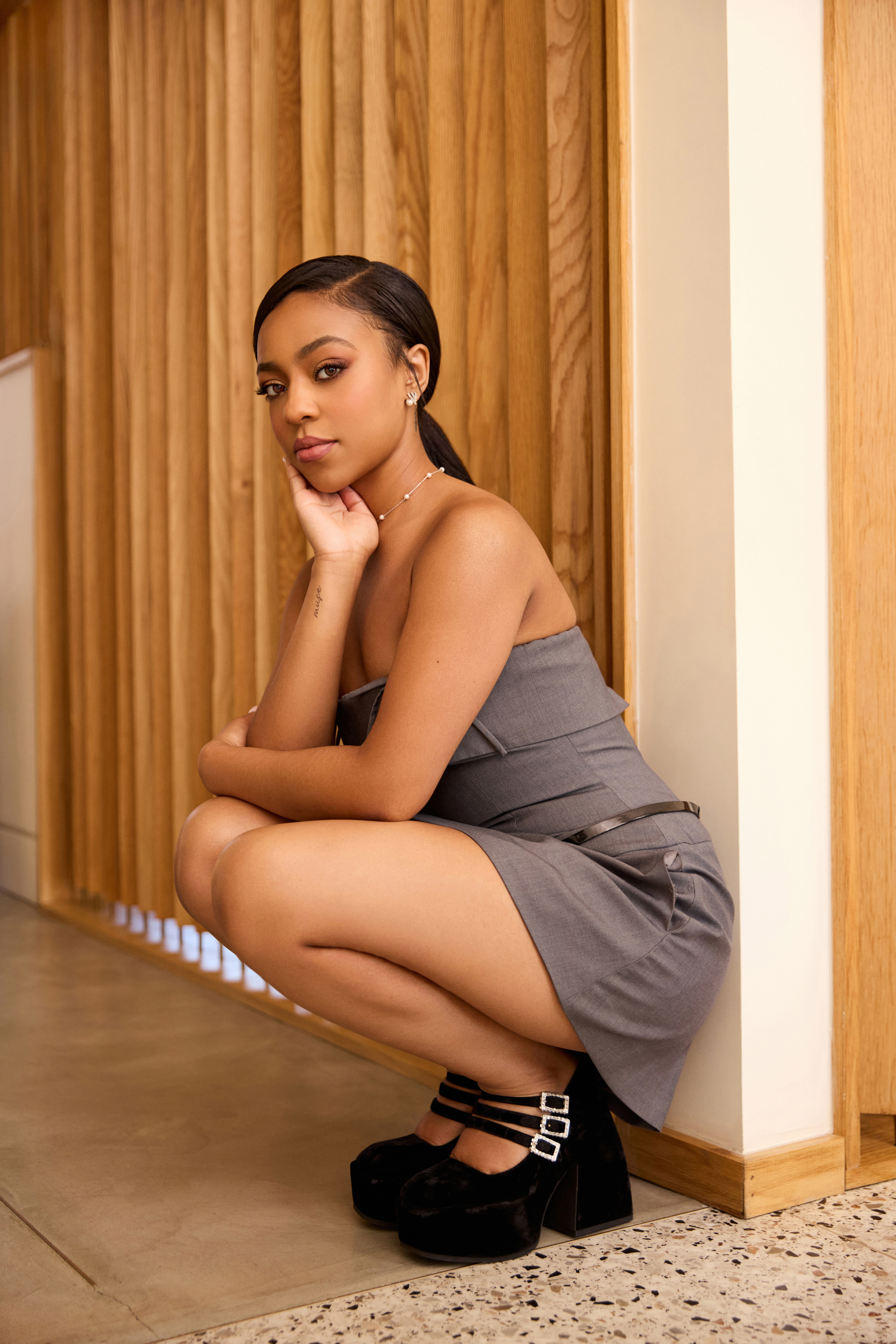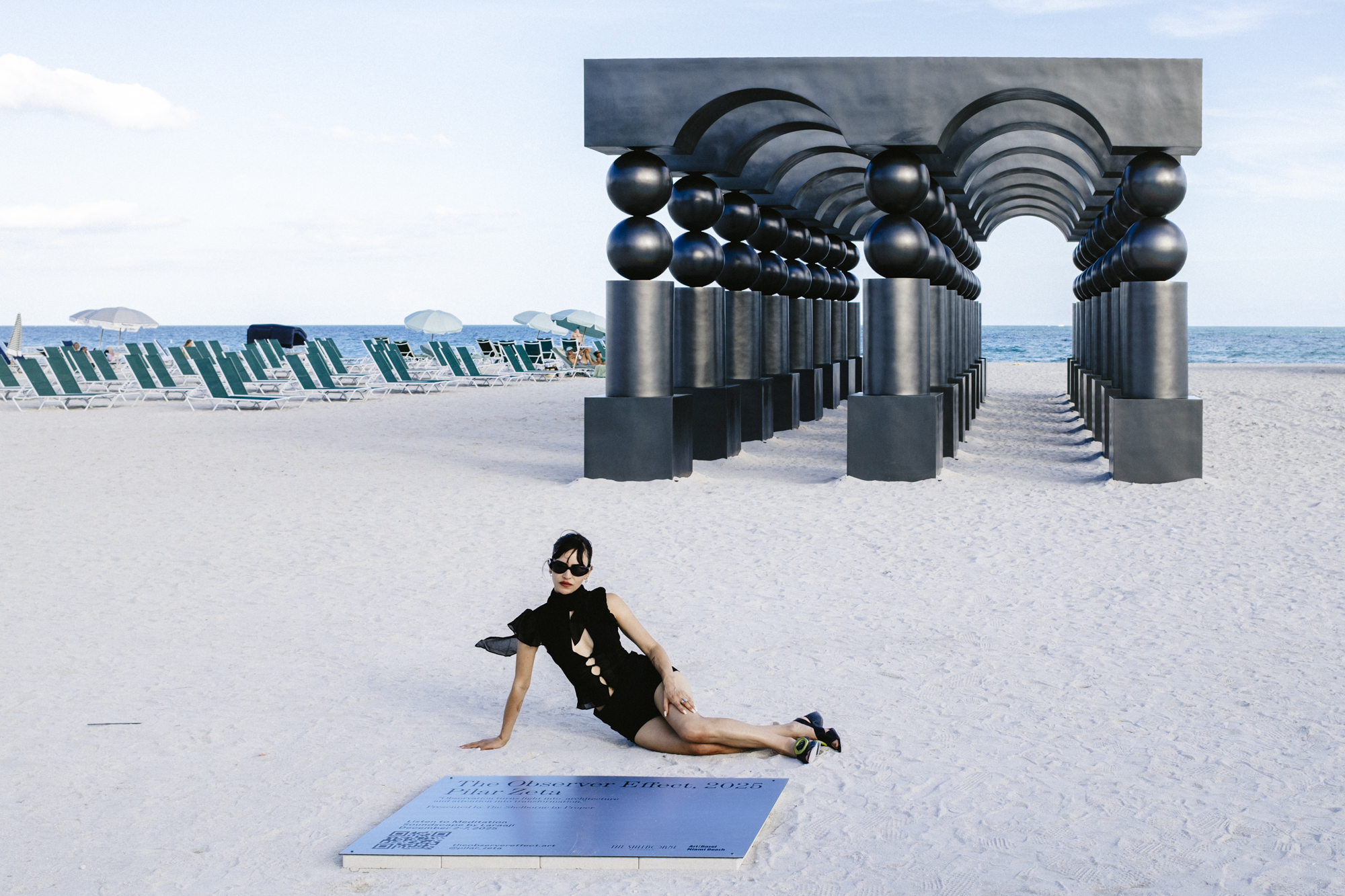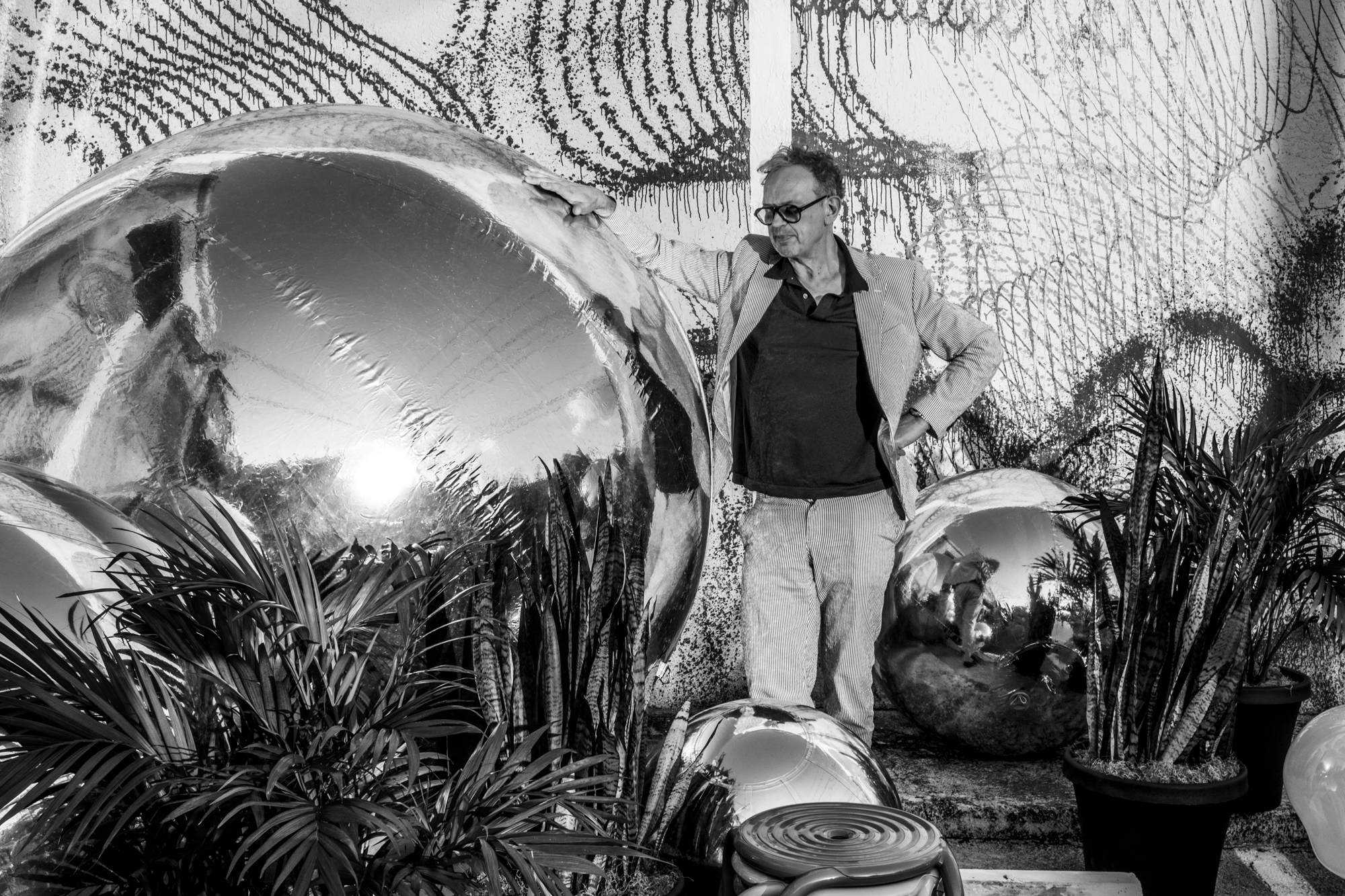Phil Oh is a street photographer with an eye for capturing the pulse of fashion as it unfolds in real time. Born in Chicago and now based in New York, Phil initially started his career in web design before transitioning to photography. His breakout moment came in 2006 when he launched the popular street style blog Street Peeper, which quickly gained a dedicated following for its candid street style shots around the globe.
Now a fixture in the fashion world, Phil is best known for his work documenting street style outside the biggest fashion shows in cities like Paris, Milan, and Tokyo. His photos regularly appear in Vogue, where he has contributed for over a decade. His work blends raw spontaneity with high-fashion sensibility, capturing an eclectic mix of fashion’s most influential personalities as they descend on cities and interact with locals on the street, often to unintentional hilarious effect.
- Photographer Phil Oh often captures an eclectic mix of fashion’s most influential personalities as they descend on cities and interact with locals on the street, often to unintentional hilarious effect.
- Phil’s work blends raw spontaneity with high-fashion sensibility. Photos by Phil Oh
Chris Force: One of the things I love about your career is that you never considered yourself a photographer. I think that’s great—the camera was just a tool when you started, and it wasn’t tied up in your ego. Do you think that has impacted your career trajectory and your work? Also, how do you think of yourself now? Is the camera still just a tool, or has it become more a part of your personality and identity?
Phil Oh: When I started the blog, the camera was just a tool to document what people were wearing. I had a cheap point-and-shoot—a Canon PowerShot or whatever. The beauty or composition of a photo didn’t mean much. Even if I wanted to make it nice I didn’t really know how. I just saw someone who looked cool, pressed the button, and that was it.
Then I started getting hired for editorial and photo jobs, so I thought, “OK, I guess I’m a photographer now; I better start learning how to use this thing.” I watched YouTube videos on how to do photoshoots, and I bought the cheapest DSLR camera I could find at Best Buy—it was like the Andre Agassi edition Canon Rebel or something.
Fortunately I never took myself too seriously, so I was able to pick it up as I went along without having an attitude. I guess people were patient with me. I did feel like an outsider in the fashion industry—I was just a photo blogger with no background in fashion or photography. I still feel that way today, even though a lot of people consider me part of the fashion establishment now, which is sort of odd.
- “When I started Street Peeper, the camera was just a tool to document what people were wearing,” Phil says. “I just saw someone who looked cool, pressed the button, and that was it.”
- “I think it’s kind of the dirty secret of fashion—fashion people often have terrible taste, or worse, they have no taste,” he says. Photos by Phil Oh
I mean this in the most flattering way, but there’s sometimes a feeling in creative industries that no one really knows what they’re doing. Everyone has an air of having it figured out, like they’re a creative genius, but in reality they’re just thinking, “Oh, this looks cool; what can we do with it?”
It’s funny you mention that because it took me a long time to realize that nobody knows what they’re doing either. Nobody has a grand vision. We’re all just throwing things out there to see what sticks and following along with someone we think has more authority.
Especially in something like fashion where everything’s so subjective.
Exactly. And I think it’s kind of the dirty secret of fashion—fashion people often have terrible taste, or worse, they have no taste.
I remember reading one of your interviews in Vogue, and I can’t recall if it was said to you or written in the intro, but the author mentioned that fashion is a “blood-sucking industry where everyone is the competition.” That seemed to sum up something interesting and horrible about that world. I’m curious about your take on it, being both inside and outside of it at the same time.
I think I’ve had a different experience than most people in the fashion industry. I just go to the fashion weeks and everyone’s pretty nice to me. I guess it’s partly because either they want their photo taken or they see me as harmless. I don’t ask for anything; I don’t need anything. So I don’t really experience a lot of the bitchiness or backstabbing that I’m sure others have to deal with all the time.
- Phil says when he attends fashion weeks, everyone is “pretty nice” to him. He says this is partly because they want their photo taken, and because they view him as harmless.
- “I don’t ask for anything; I don’t need anything. So I don’t really experience a lot of the bitchiness or backstabbing that I’m sure others have to deal with all the time,” he says. Photos by Phil Oh
What comes to mind when you think about the culture of image-making when you started versus now, with the explosion of image-making? What stands out to you when you compare then to now?
I hate to sound so negative all the time—but in the earlier days of the web, up to the mid-2010s, everything was viewed on computer screens. Images were large and full-size. For a few years on the Vogue website the pictures were full-bleed, taking up the entire computer screen. It was great.
When the move to mobile happened and most people started viewing content on their phones, my pictures became like two inches wide. They feel so disposable now, which sucks because I’ve gotten so much better at photography, but the pictures are only two inches big. Back in the early-to-mid 2010s my pictures were just OK.
Everyone’s always talking about the good old days, like photographers whose heyday was in print. I think of my glory years as when everything was on websites.
Has that changed how you view your own process? I’m guessing when you were starting out, there were times when there weren’t many other photographers doing what you were doing. Now I see you’re always in a crowd of shooters. Has that changed anything for you?
I actually really enjoy that. When it was just a few of us at the shows it was easier, but the photos were focused solely on the subject—who they were and what they were wearing. That was it. As the handful of photographers grew to dozens, and later to hundreds, I had to adapt. I had to rethink what my photos looked like.
- Phil enjoys capturing the chaos—the photographers, tourists, onlookers, publicists, models, security guards. “It all became a greater tableau,” he says.
- “I actually enjoyed the growing number of photographers. It made me think more about what I wanted to do as a photographer beyond just being a documentarian of what people were wearing,” he says. Photos by Phil Oh
Instead of just people standing there, I started thinking about how to make the photos more interesting. I enjoyed capturing the chaos—the photographers, tourists, onlookers, publicists, models, security guards. It all became a greater tableau. I actually enjoyed the growing number of photographers. It made me think more about what I wanted to do as a photographer beyond just being a documentarian of what people were wearing.
When you’re looking to make images now, where does your eye go first? I imagine there are lots of different ways to approach this. You might be trying to capture a certain designer or celebrity, or you could focus strictly on the visual aspect, looking for the best images regardless of who’s in them. What do you look for these days?
There has to be a balance. First and foremost, I have to get well-composed photos of key people because that’s what the assignment is. But I also want to be a little selfish and make photos that I’m proud of—images that I think make a statement, even if it’s just in a small way. I try to inject some wittiness or social commentary when I can, though who knows if that even comes through. Maybe it’s just my brain telling me that to make myself feel better about what I do.
Do you remember anything about this photo of model Erin O’Connor you made?
Oh yeah, she’s at the Burberry show in London in this photo. I get a lot of access from the big brands because they want photos of their VIPs dressed in their brand, since they know where the photos will go. Every other photo of a celebrity or VIP at a fashion show feels like a contractual obligation—they’re either standing in front of a step-and-repeat or sitting front row looking kind of miserable.
I mean, they don’t want to look terrible—and the best way to do that is to look like nothing. Just neutral. I really try to get some sort of emotional response from the guest, especially if it’s a celebrity. Fortunately, Erin played along and gave me a little fireball or Street Fighter II Hadouken sort of vibe.
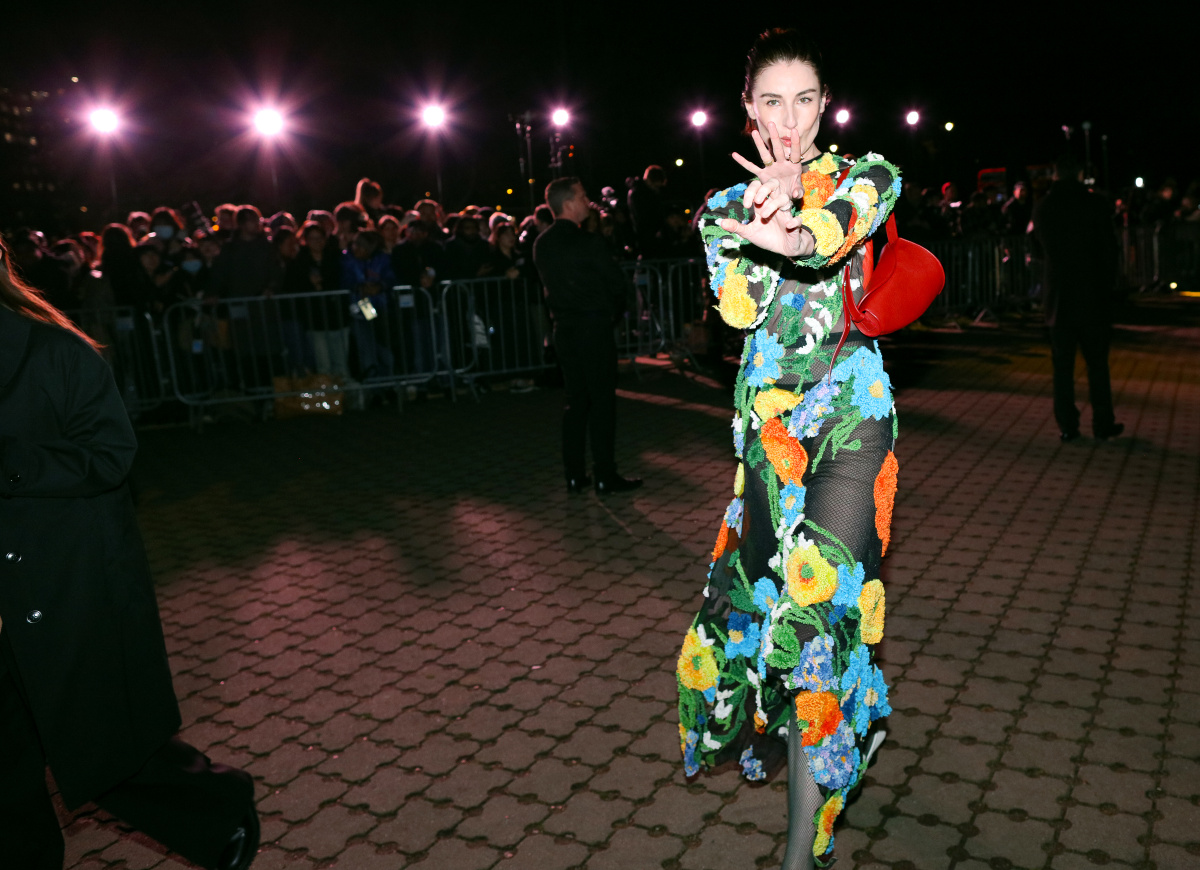
Model Erin O’Connor at the Burberry show in London. “I get a lot of access from the big brands because they want photos of their VIPs dressed in their brand, since they know where the photos will go,” Phil says. Photo by Phil Oh
Do you remember if you gave any prompt or direction when you took this photo?
I don’t even look through the camera viewfinder when I’m taking a picture. I just sort of hold it in front of me so that the subject can see me instead of just some random, anonymous camera in their face. I probably look a little goofy, and I put on a bit of a clown act so the subject is hopefully a little disarmed or confused.
That’s one strategy I use to get the shot—I don’t tell them what to do. I can’t just tell someone like Rihanna to “smile.” You just hope they pick up on the cues and know what you’re trying to do. Some of them do, and some of them look at me like I’m crazy, which I guess is the price I have to pay.
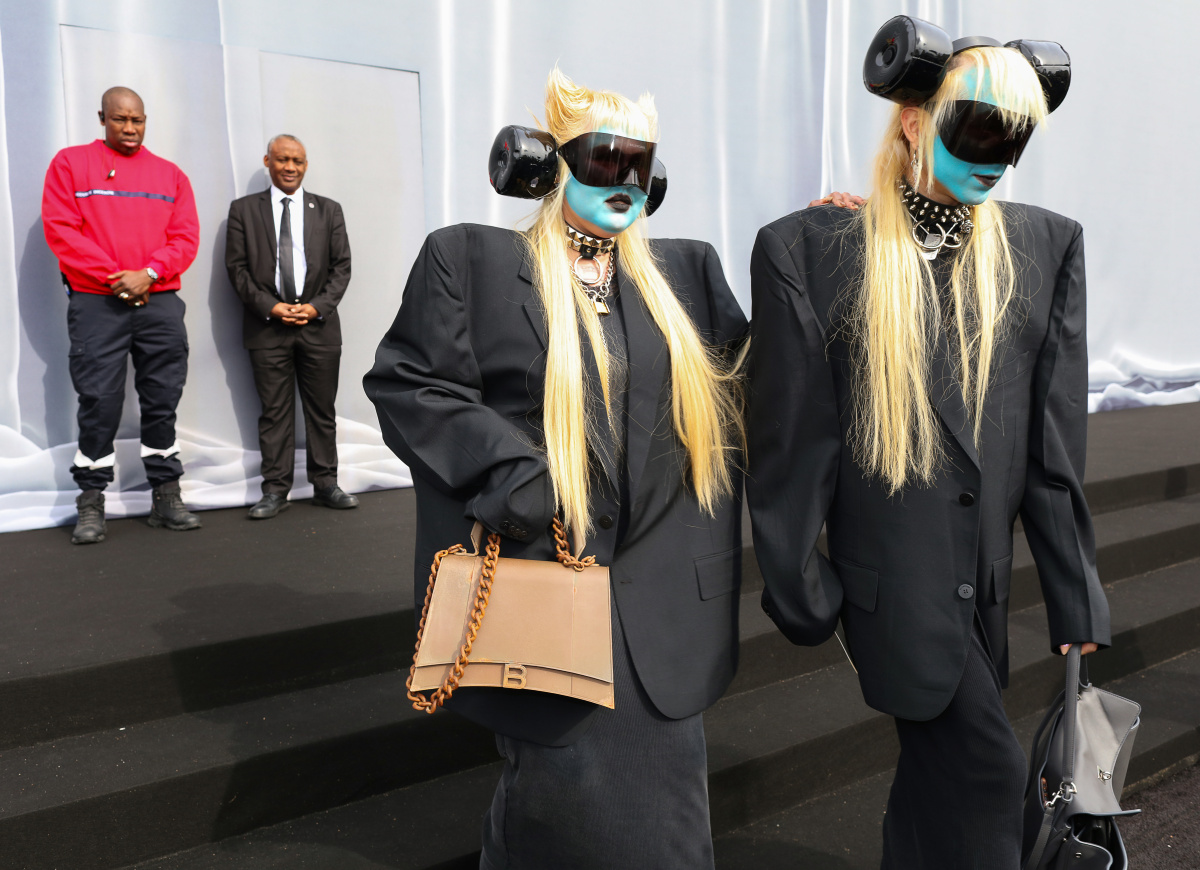
“These are the kinds of pictures I like because they capture the whole image, this idea of our obsession with celebrity,” Phil says. “Not that they’re celebrities, but I just think it’s really funny. It also mirrors the two older men behind them. It’s like when the fashion world and the real world intersect. What we in the fashion industry think of as normal, you realize to 99% of the world is absolutely insane. Which makes you question—what is normal anyway?” Photo by Phil Oh
You found yourself recently on the other side of the camera posing for the “Feels Like UGG” campaign. Carole Diarra from UGG said your ability to capture fashion enthusiasts’ and celebrities’ self-expression made you the perfect connection between UGG and the creative world.
When I first read the brief I wasn’t sure what to make of it. But the photographer was really good. I guess it helps that I don’t really mind looking goofy or uncool, so I can ham it up and be okay with it.
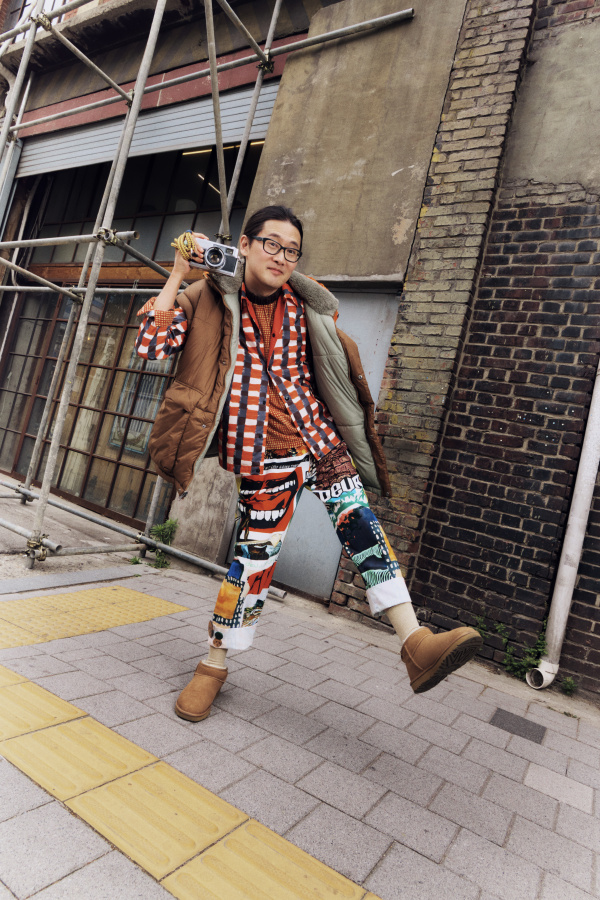
“The boots are the classic Ultra Mini, available now on the UGG website, UGG stores, and select retailers nationwide,” Phil says. “The rest of the outfit including the puffer vest is actually mine. They wanted to reflect my personal style, so I just brought a suitcase of my own clothes and made it my own.” Photo courtesy UGG
Do you have a favorite city to shoot in?
I like New York and Paris. New York because it doesn’t have the big mega-brand shows like they do in Milan and Paris—there’s no Dior, Louis Vuitton, or Gucci where they block off whole courtyards and streets and everyone is dressed in the brand. The shows in New York are more about younger, weirder, artsier designers, so a lot of the shows take place on the street.
You get a lot more of the city’s life—tourists, office workers—in the background. Whereas in Paris and Milan, the shows are in beautiful courtyards or villas. It looks nice, but you don’t get that same sense of place that you do in New York.
How tuned in are you to the actual fashion versus being interested in the culture of people wearing the fashion? How much does the fashion itself drive the images you make?
I love style. Style and fashion are two different things, really. Anyone with money can go out and buy a $5,000 dress, but not many people have the ability to put together an outfit with layers and personal style. Those are the outfits that appeal to me more. But the game’s changed—it’s rarer to find that now because most guests at the shows are dressed by the brand, so they’re in head-to-toe looks.
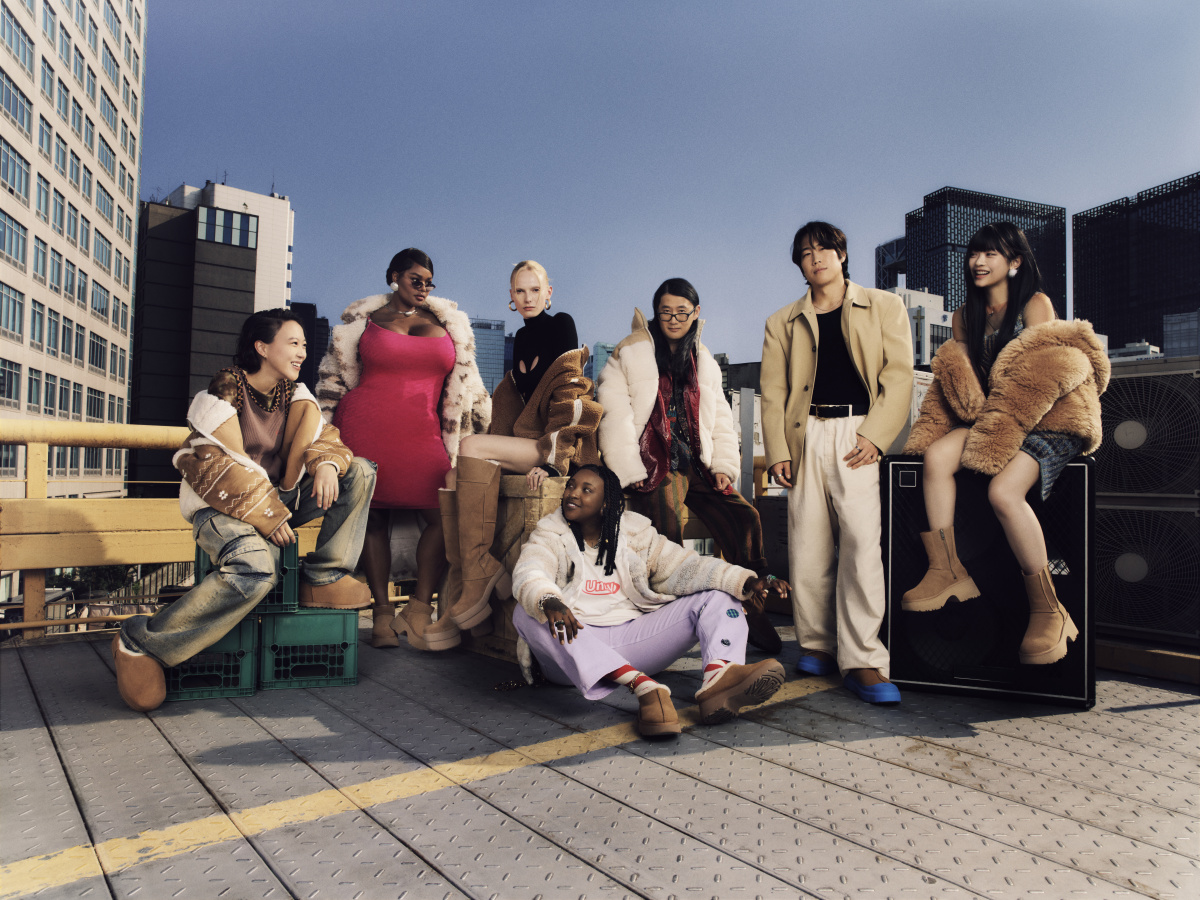
“When I first read the brief I wasn’t sure what to make of the campaign,” Phil says. “But the photographer was really good. I guess it helps that I don’t really mind looking goofy or uncool, so I can ham it up and be okay with it.” Photo courtesy UGG
Was it less common when you started shooting street style to see people who were really manicured and dressed from a corporate perspective?
In beginning and up until the mid-years, everyone was just wearing their own clothes—no one was borrowing or anything like that. For the first five or six years the guests didn’t even consider the photographers when putting together their outfits. They were dressing for themselves or their colleagues when they were going to fashion shows.
In the late 2000s and around 2010-2011, as interest in street style grew, editors, stylists, and models started to see how it could help their careers if they got some notoriety online. They began dressing more for us, the photographers, which was great. But when the mega brands caught on they started dictating what people should be wearing. It became less about documenting genuine style and trends and more about documenting what the brands wanted us to capture.
That sounds less interesting doesn’t it?
Yeah, it is. That’s not to say it doesn’t have value or that I don’t enjoy it, but it does mean I have to try harder to make a picture more interesting.
If you wanted to focus solely on shooting style now, where would you go? What places or events or cities would still allow you to capture that authentic style you saw in the past, where people were dressing themselves?
I’m not even sure if places have a unique identity in style anymore. Trends and ideas move so quickly via TikTok and Instagram that everywhere feels kind of the same.
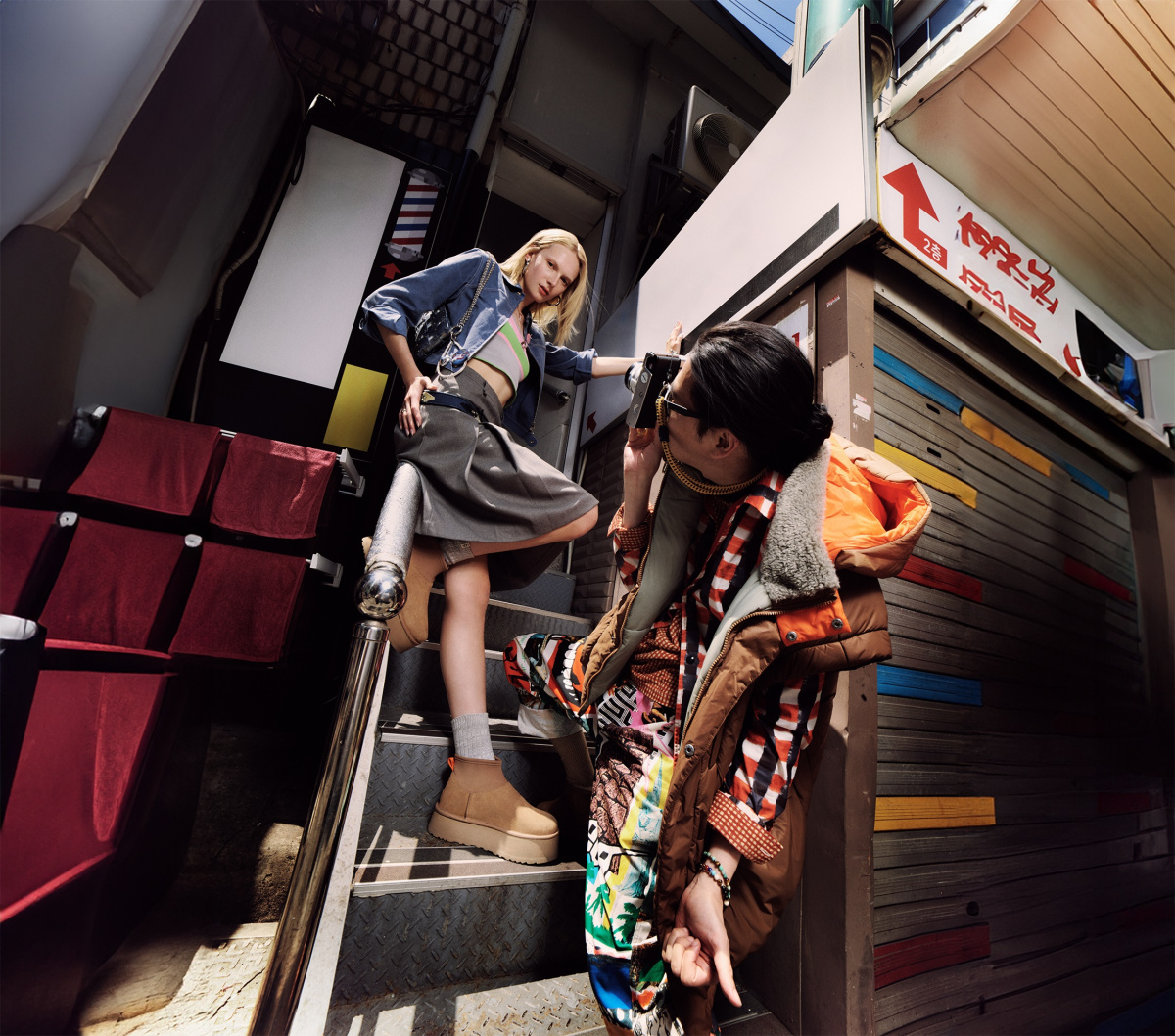
“I love style,” Phil says. “Style and fashion are two different things, really. Anyone with money can go out and buy a $5,000 dress, but not many people have the ability to put together an outfit with layers and personal style.” Photo courtesy UGG
I remember the days of Tower Records, getting a FRUiTs magazine.
Me too. I’d be thinking, “This is Tokyo. This is crazy. This is unique. I’ve never even seen an image like this before.”
The street style is crazy, and it was really exciting even for me, someone who wasn’t particularly interested in fashion at the time. I was like, Wow, this is super cool. Now I’m wondering, where is that energy? Where is that really interesting style happening?
I guess it’s similar to asking where interesting music is being made. Is there interesting style anymore? I mean, God, I’m so negative; I need to stop. I don’t know. But I love my job.
A version of this article appeared in Sixtysix Issue 13.
